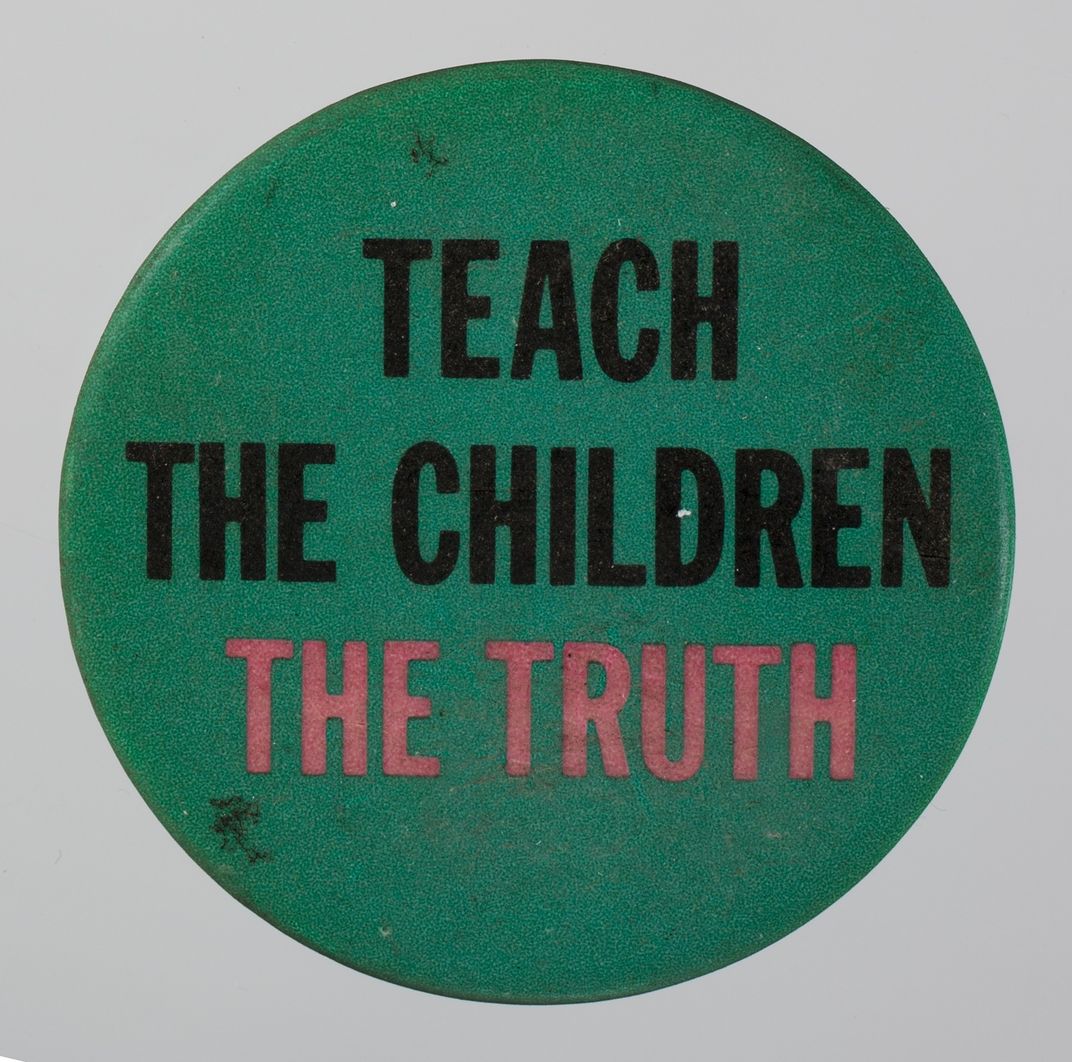Starting Conversations that Support Children Before Traumatic Events Happen
Several events over the last year have left caregivers and educators asking, “What do we tell children now?” But, it’s time to ask ourselves what we are going to say and do before the next time this happens. Our conversations with children need to shift from being reactive to being proactive.
:focal(2532x1687:2533x1688)/https://tf-cmsv2-smithsonianmag-media.s3.amazonaws.com/blogging/featured/JN2019-00362.jpg)
This is part two of a series on talking with children about traumatic events. Part one addresses how to begin conversations with children after traumatic events occur.
At the National Museum of African American History and Culture, talking about violence, racism and tragic times in our nation’s history is something the early childhood education team works to support caregivers and educators of young children to do, both at home and in classrooms. We know that these kinds of conversations aren’t easy but believe that they are possible, necessary and never too early to begin. When done over time, in age-appropriate ways, we can have honest, empowering conversations about history and current events with children starting at age 3 - while learning around identity, diversity and justice can begin even earlier.
The attacks that took place at the U.S. Capitol on January 6, 2021, though surprising and unexpected for some, were reminders of past experiences for others who know well that these kinds of events have and unfortunately, will continue to happen. As adults in the lives of children at this moment, we have an important responsibility and a special opportunity to be the ones who can lovingly, gently and honestly talk to our little ones about the past and present, and support them in navigating the future.
Prepare for next time.
Several events over the last year have left caregivers and educators asking, “What do we tell children now?” But, it’s time to ask ourselves what we are going to say and do before the next time this happens. Our conversations with children need to shift from being reactive to being proactive. There are discussions that can take place daily around issues at the core of what happened at the U.S. Capitol.
Concepts of fair and unfair, violence and peace, race and differences, emotions and communication, love and hate must be explored regularly to create a foundation on which to have later conversations about painful and scary times. But also, to support children in growing their positive sense of self and others and their ability to be kind, anti-racist and engaged citizens as they grow older. When these abstract concepts are explored with picture books, spoken about during play or introduced in activities like art-making, they are accessible to children and better understood.
After the events at the U.S. Capitol, imagine a conversation with a child that started like this: “Remember when we talked about how it’s okay to feel angry but not okay to hurt someone because we’re angry? When those people were angry, they didn’t make safe choices.”
Or like this: “The last time we saw that flag with a big X on it we talked about how unfair it is that people are treated differently because of their skin color. Why do you think they were holding that? How do you feel seeing that now? How do you think that made other people feel?”
When children consistently learn about identity, fairness, and history, discussions in response to challenging current events become part of an ongoing conversation with links to familiar topics, which allows children to process their emotions more effectively. See the recommended resources below to start and continue these kinds of conversations.

Communicate with your child on the day of an event.
Plan ahead for the days you know serious events are expected to take place. If possible, find ways to read or watch the news in private rather than allowing children to overhear conversations or unintentionally see images that will ultimately lead to misunderstandings and feelings of fear or worry. Decide how you will share the story with them when you feel ready. Consider this:
-
What is important that they know or see in this moment?
-
What can be shared later?
-
How can you make sure they know, in the midst of this, that they are loved and okay right now?
If you do plan to share information with your child as it comes in, though not recommended, interpret what they are witnessing at the moment. Check in often about what they are thinking and feeling. Join them in taking breaks from the news or social media. For example, you might say or ask:
-
Those people have been told to stop and it looks like they aren’t listening. What do you think about that?
-
The news anchor says that a lot of people are safe in their homes right now just like us. I’m glad we are here together!
-
How are you feeling right now? Let’s draw a picture about that.
-
We’ve learned a lot of new and important things today. It’s time for a break! Would you like to take a walk with me?
Remember that even with practice, talking about traumatic events isn’t easy. Stay informed and be gentle with yourself by practicing self-care. When you educate yourself and care for your mind and body during moments like these, you’ll be better equipped to support little ones and make a positive difference in the world you share.
Keep the conversation going with these recommended resources:
-
Learn to talk about race, identity and community building with your child as a caregiver or an educator on the National Museum of African American History and Culture’s Talking About Race website.
-
Discover and explore topics like bravery, emotions, fairness and justice with activity booklets and recommended resources in NMAAHC Kids: Joyful ABCs Activity Books.
-
Watch videos and read children's books about racism and activism with this MLK-inspired activities and resources guide.
-
Find books to start conversations with book lists from Social Justice Books.
-
Learn more about everyday ways to talk about important topics and events with workshops and articles from EmbraceRace.
